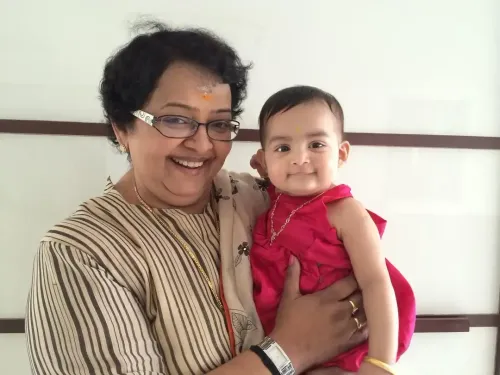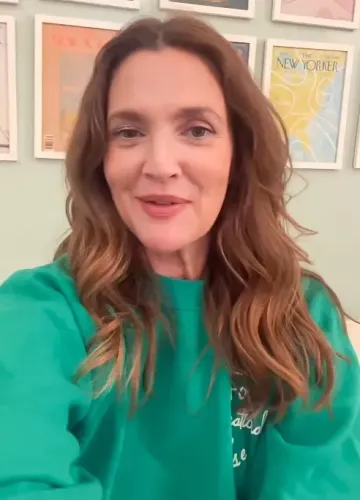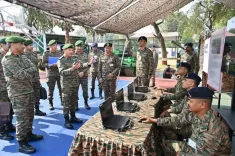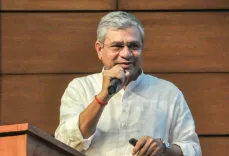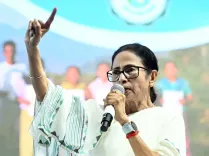C. Ramchandra: The Composer Who Bridged Eastern and Western Music - and Moved a Prime Minister to Tears
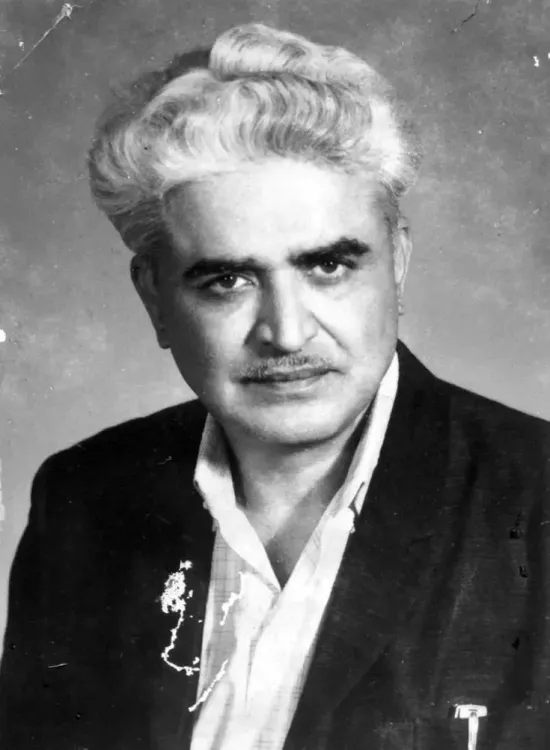
New Delhi, Jan 12 (NationPress) His impact on Hindi film music, ranging from classical to contemporary, is significant, but composer C. Ramchandra's ultimate legacy to the nation was in crafting the emotionally stirring and haunting melody of its most famous patriotic song - one that moved a Prime Minister to tears upon its first performance.
While "Ae mere vatan ke logo.." gained recognition thanks to Lata Mangeshkar’s powerful rendition, she hesitated to sing it initially due to insufficient rehearsal time but could not decline the request of its legendary lyricist, Kavi Pradeep. The poet, who penned the song shortly after the 1962 India-China war, immediately chose Ramchandra to compose the music, owing to their longstanding collaboration.
Born on this day (January 12) in 1918 in Puntamba, located in what is now Maharashtra's Ahmednagar district, Ramchandra is also famed for his light-hearted, seemingly whimsical songs such as "Aana meri jaan Sunday ke Sunday" ("Shehnai", 1947), "Mere piya gaye Rangoon, kiya hai wahan se telefon" ("Patanga", 1949) - arguably Indian cinema’s first telephone romance tune, "Gore gore banke chori" ("Samadhi", 1950), "Shola jo bhadke", "Shaam dhale khidki tale", and "Bholi soorat dil ke khote" ("Albela", 1951), along with "Ina meena dika" ("Aasha", 1957), among many others.
Many of these compositions, inspired by his admiration for American musician Benny Goodman, pioneered new styles by incorporating instruments like the alto saxophone, guitar, harmonica, bongo, oboe, trumpet, clarinet, and saxophone. Notably, he also performed as a male playback singer, making him one of the few composers, alongside Hemant Kumar, to take on this dual role.
However, Ramchandra's talents extended beyond merely introducing American jazz and Afro-Caribbean rhythms to Hindi cinema. His partnership with Kavi Pradeep began when he composed music for "Dekh rere sansar ki haalat kya ho gayi Bhagwan" ("Nastik", 1954) - one of the songs that the master lyricist performed himself.
With a profound understanding of and passion for Indian classical music, his raag-based works are timeless. He had a distinct fondness for Raag Bageshri. When asked about this in a BBC interview by Mahendra Kaul, he mentioned its simplicity and his genuine affection for it.
This raga serves as the foundation for his timeless creations such as "Mohabbat hi na jo samjhe, woh zalim pyar kya jaane" ("Parchhain", 1952), and "Radha, na bole na bole re" ("Azaad", 1955).
Interestingly, Ramchandra was not the initial choice for the latter film, produced by southern Indian filmmaker S. M. Sriramulu Naidu.
Maestro Naushad was contacted first but declined when told he would need to compose ten tunes in a month, stating that he couldn't guarantee even a single tune in that timeframe. Following this, Ramchandra, who had recently achieved success with "Anarkali" (1953), featuring "Yeh zindagi usi ki hai" and "Mohabbat aisi dhadkan hai" both picturized on the enchanting Bina Rai, was then approached.
Ramchandra not only met the deadline - with his only condition being that he would receive one rupee more than what the producers had offered Naushad - but he also performed a song for the film - "Kitna haseen hai mausam, kitna haseen safar hai" - emulating the style of Talat Mahmood!
Born Ramchandra Narhar Chitalkar, known as C. Ramchandra or Anna Sahab in the music industry and Chitalkar for his film songs, he was always fated for a career in film. He disclosed in a BBC interview that he inherited his love and musical knowledge from his father and, being indifferent to academics, studied music under various maestros before entering the film industry as a teenager in 1932. During the silent film era, he aspired to be a leading man.
After a few minor roles, he landed a lead part in "Naganand" (1935), which turned out to be a spectacular flop. Ramchandra later recalled that this film might have set a record by being screened for only half its duration for the meager audience of a dozen who attended, and they left midway. It was subsequently withdrawn from screening and never shown again, he noted with a chuckle.
As Ramchandra candidly revealed, he felt he was not suited for any other profession and thus ventured into film music, where he eventually gained recognition with Bhagwan Dada's "Sukhi Jeevan" (1942) and maintained his prominence throughout the late 1940s and the 1950s, showcasing his versatility.
V. Shantaram's "Navrang" (1957), particularly "Aadha hai Chandrama", where he employed Raga Malkauns instead of his beloved Bageshri, marked a pinnacle in his career. Nevertheless, he gradually became less active before retiring from the industry in 1972 and passing away in 1982.
(Vikas Datta can be reached at vikas.d@ians.in)


